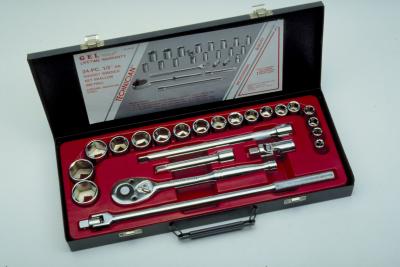
Between the cylinder head and the engine block is a one-piece gaske, the head gaskett. Whereas the majority of gaskets are designed only to prevent fluid leaks, head gaskets must also ensure that the compressed air within each cylinder does not leak out of the combustion chamber. The most accurate way of determining whether a head gasket is defective without removing the cylinder head is with a compression gauge.
Remove all of the engine’s spark plugs with a deep-set socket wrench.
Block the throttle wide open or have an assistant push the accelerator pedal to the floor.
Attach a compression gauge to a spark plug opening on the cylinder head. Note that the hose that protrudes from the bottom of the compression gauge has a threaded metal fitting on its tip. Turn that fitting in a clockwise direction into the spark plug opening until hand-tight.
Crank the engine to record the maximum gauge reading, then record that reading.
Repeat for the remaining cylinders.
Compare the recorded results. If the compression reading on two or more adjoining cylinders is much lower than the remaining cylinders, the head gasket is blown.